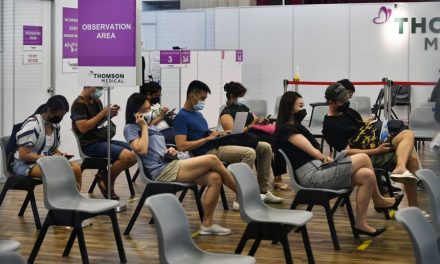TheBusinessYear (TBY) talks to M. Kula Segaran, Minister of Human Resources, on developing a skilled workforce, the challenges of Industry 4.0, and the Malaysian diaspora.
Could you elaborate on your plans to boost productivity by reskilling and upskilling workers?
All employers from 63 subsectors within three key economic sectors (services, manufacturing, and mining and quarrying) are obliged to register with the Human Resources Development Fund (PSMB) and pay a 1% Human Resources Development (HRD) levy of their total Malaysian employees’ salary for Human Capital Development (HCD) initiatives. As of October 31, 2018, the total number of PSMB-registered employers is 24,627, and these employers hire 2.24 million Malaysian employees. The agency offers financial assistance and training schemes that are driven by its registered employers’ training demands, encompassing technical and soft skill trainings in domestic and international courses, setup of training rooms and relevant facilities within an employer’s working space, as well as facilitating training for disabled and future workers. More recently, PSMB established a fully-fledged customer engagement team tasked with identifying the training demands and challenges among its registered employers. More recently, in the 2019 budget announcement under the Technical and Vocational Education and Training (TVET) initiative, the government will allocate to PSMB a MYR20-million (USD4.86 million) matching grant for the implementation of two TVET driven programs: the Apprenticeship Program and the Graduates Enhancement Program for Employability (GENERATE). These programs are targeted at school leavers and graduates, respectively, helping them to become job-ready while simultaneously ensuring higher productivity levels at the workplace. From 1993 to October 2018, over 19.7 million local employees of PSMB registered employers benefited from these schemes, and in 2019, PSMB targets approximately 1.2 million people. Boosting productivity by reskilling and upskilling workers is one of the most important aspects of human capital development.
While the availability of tertiary educated Malaysians is increasing, so is graduate unemployment. Is there a skills mismatch between university curricula and professional requirements on the labor market?
There has been a lack of attention paid to this problem, which could blossom to become a major issue soon. My worry is that there are too many graduates in this country. Though we need graduates, there seems to be an issue of a skills mismatch in terms of university curricula and the professional requirements from the labor market. Universities in Malaysia fall under the purview of the Ministry of Education, and it is taking steps to address this issue. On the part of the Ministry of Human Resources, there are several initiatives underway to prepare local workforces for the future. Among these are conducting a TVET Master Plan Study that encompasses the issues of TVET’s demand and supply toward addressing the issues of skills and industry needs, including the challenges of Industry 4.0 and ensuring high employability among TVET graduates with better pay. In order to enhance the quality of TVET and in line with the needs of Industry 4.0, this study will address the aspect of curriculum restructuring, upgrading of facilities and training equipment, professional development of TVET instructors, and other related matters. Another of our initiatives is the review of the National Occupational Skills Standard (NOSS) to meet the current knowledge and skills in the era of digitalization, automation, or Industry 4.0 required by industrial players. Although youth unemployment is relatively high at 10.3%, Malaysia faces a situation of full employment. We do not have enough workers and even have around 2 million legally documented workers from other countries, and it is likely that many more are working in Malaysia illegally. At 3.4%, unemployment in Malaysia is surmountable. We are looking at the situation holistically.
What role will high-tech play in Malaysia’s transition to a high-income and developed economy?
There is no looking back for Malaysia when it comes to adopting technology. It will play a major role in how we work as a country. In that sense, Malaysia has developed the Industry4WRD policy to provide a platform for industries to adopt any of the 11 pillars under the Industry 4.0 banner. The platform is a combination of tax and cash incentives to ensure that the technological adoption is led by the industries. The changes in technological adoption will most likely see industries creating a new employment landscape not been seen before under the traditional economies. The new employment landscape will also result in increasing incomes and ultimately push us into a more competitive, vibrant and developed economy.
How will the government enhance the participation rate of women in senior and management positions?
The 11th Malaysia Plan emphasizes on anchoring growth on people, focusing on empowering human capital, including women talent. The 2019 Budget clearly reflects the government’s concern on this matter, and the government is taking the lead in encouraging women to contribute to the economy and pushing for more women in leadership roles which include senior and management position. Further to this, there is also a push to increase women on boards to 30% by 2020. To support this agenda, the government also announced tax exemption on employment income to be enjoyed by women on career break who return to the workforce. Furthermore, the Career Comeback Program under TalentCorp aims to encourage employers to recruit and retain female talent in the workforce, which caters to women in management positions right through to professional level. To date, we have placed 694 women in the workforce since the launch of this program with an average monthly salary of MYR7,000-8,000. Moving forward, TalentCorp is highly committed to continue engaging with the relevant stakeholders and women talent to advance this initiative forward with the support from the Ministry of Human Resources.
What are the most important requirements for Malaysia to maintain and further enhance its international competitiveness?
Malaysian employees are some of the most sought-after employees of the world due to their linguistic prowess, diligence, and skills. There are about 1 million Malaysians working abroad. Our productivity should increase, though we are a highly competitive country on the global stage. My biggest concern is the lack of R&D. More money and time must be spent on this, and the government must give attention to this. International competitiveness is all about being better than our competitors. As a leading developing nation that is on the cusp of being a develop nation, our benchmark are developed nations. When we look at developed nations, they have some ideal characteristics that we can look upon for inspiration, such as value-based ideals and technology adoption. These value-based ideals include integrity, transparency, and accountability in how we do work. Having sound value based ideals provides us the opportunity to work with large organizations that share those kinds of values. Those organizations are sensitized toward many social, environmental, and economic issues, and they base their strategies on meeting those ideal values. Technology adoption is one area in which Malaysia sees bright potential as a new source of revenue for the country. In light of this, Malaysia has developed the Industry4WRD policy as a platform to enhance our international competitiveness by adopting technological changes.









